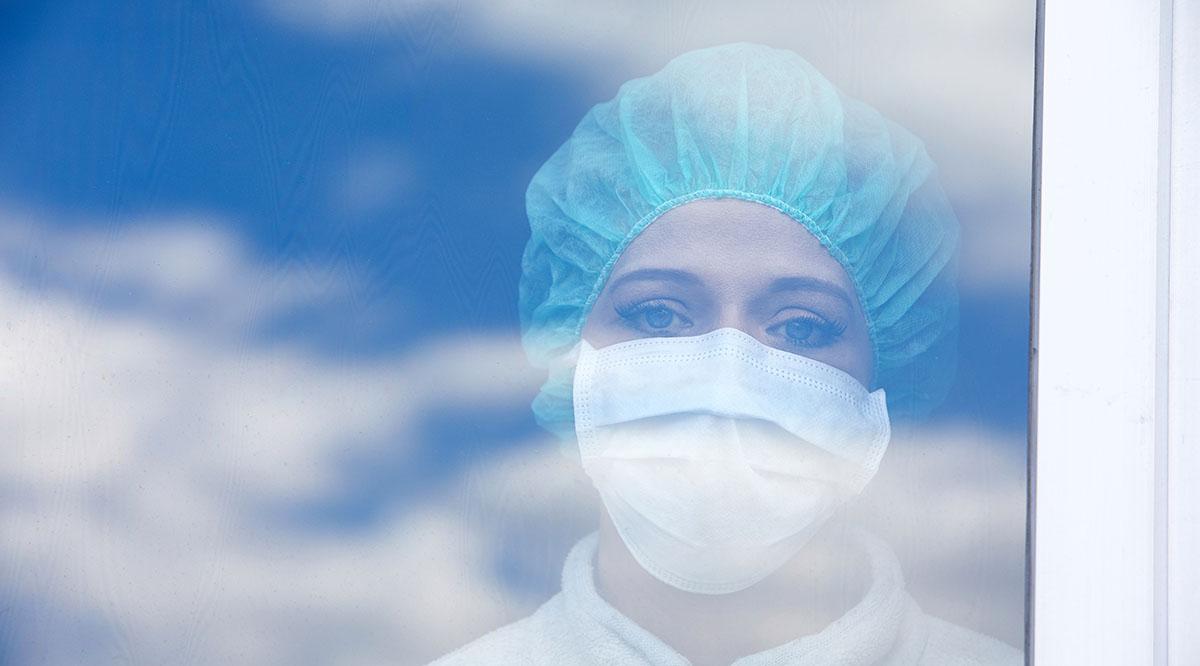Editor’s note: The opinions expressed by the author do not necessarily reflect the views of the AAMC or its members.
It was a drizzly morning in mid-March when I drove to the hospital to receive my coronavirus test. After working at Brigham and Women’s Hospital as an internal medicine resident in the early days of the pandemic, I had developed slight symptoms — dry cough, sore throat, and fatigue. By then, I had already begun to face some of the challenges that have transformed how care is being delivered in this unprecedented time.
On the oncology ward where residents rotate, we are accustomed to patients with low white blood cell counts and dampened immune systems; we are already tremendously cautious. As the pandemic encroached upon us in early March, we began wearing masks and gloves and minimizing the number of providers in each room. As I stood in the corner during bedside rounds, watching my intern and attending physician listen to a patient’s lungs, I wondered about how he might spend the hours ahead: mentally tracing the perimeter of concrete shapes outside his rain-streaked window, fiddling with jigsaw puzzles, or thumbing through his collection of World War II histories.
Our patient was in his 50s, a stoic gentleman on a long course of chemotherapy for leukemia. Within days, his hospital experience had been transformed. The night I admitted him two weeks prior, his room was crowded with loved ones (his wife, adult children, a dear friend) who laughed loudly between bites of Chinese takeout. Now, not even his nurse could enter except to check vital signs or administer medications. Nor could his family see him, given the tightened visitor policies and travel restrictions. He was marooned in this room, surrounded by a sea of deafening silence.
Physicians endure fear and frustration as we strive to perform duties with shifting guidelines, limited protective gear, and rising infection rates.
The isolation, as well as his anticipation of the unfolding pandemic, made him so tense that he needed frequent doses of anti-anxiety medicine. I could not come back for a social visit, as I typically did in the afternoons, due to the limited supply of masks and the need to minimize contact. From a crevice by the door I absorbed the growing dread, not knowing it would be my last time in any patient’s room for a while.
Like patients who wonder what will happen next, physicians, too, endure fear and frustration as we strive to perform duties with shifting guidelines, limited protective gear, and rising infection rates. I experienced the anxiety on both sides: as the resident in the corner of the room, yearning to connect with the lonely person in front of me; and as the newly symptomatic patient driving to the ambulance bay outside my hospital for a COVID-19 test.
There, I was greeted by a nurse appropriately covered from head to toe: face shield, goggles, respirator, gown, and gloves. I pressed my ID card against the windshield for the security guard, then pulled into a spot by a tent. The nurse spoke loudly through her mask: “Roll down the window and keep your head still. The swab is deep. It’ll be worse if you pull your head back.”
I followed her instructions, tears springing to my eyes from the intrusive probe. She didn’t see. She had already turned her back to tip my specimen into a biohazard bag. I rolled up the window. In a minute she returned, asked me to lower the glass just a crack, and slid through a paper with follow-up instructions.
The test was efficient and swift. Yet my experience lacked the typical hallmarks of the patient encounter: no waiting room where a person crosses a threshold to become a patient; no taking of history to share the patient’s narrative; no physical exam as a ritual toward healing.
Fortunately, my test result was negative. But as care increasingly goes virtual during the pandemic, I am among a group of residents who join inpatient rounds via a tablet, helping our assigned teams with documentation from afar.
In the intensive care unit, the team wheels around an IV pole holding an iPad so that I can see and hear the doctors, nurses, and respiratory therapists. The masked faces, beeping heart monitors, and buzzing ventilator machines give me the briefest glimmer of my colleagues’ difficult reality. One morning, we passed a patient who had pulled out his breathing tube and was crying out. From my viewpoint through the iPad in the hallway, I watched his concerned medical team huddle by the door. I felt an urge to look into the room and see the patient’s face: Was he contorted in pain? Frightened? Oblivious to his surroundings? But the fogged glass pane on his door was just outside my view.
Don’t get me wrong: I’m grateful I can contribute from afar. Virtual care allows for more outpatient visits and support for inpatient teams. Our phones and laptops affirm that we are connected during the pandemic, that we suffer or prevail in the company of others. At the end of a long day at the hospital, my colleague called the son of the man who had pulled out his breathing tube to share an update; it made the care feel not so distant after all.
Still, I wish for a return to conversations unencumbered by masks; for a chance to join my patient with leukemia to fill in jigsaw puzzles during a rainy afternoon. I long for the satisfaction of the physical exam: tapping the abdomen, listening to the lungs, locating the vein in the neck; for the delight when my surprised patient declares, “You have warm hands, doc!”

